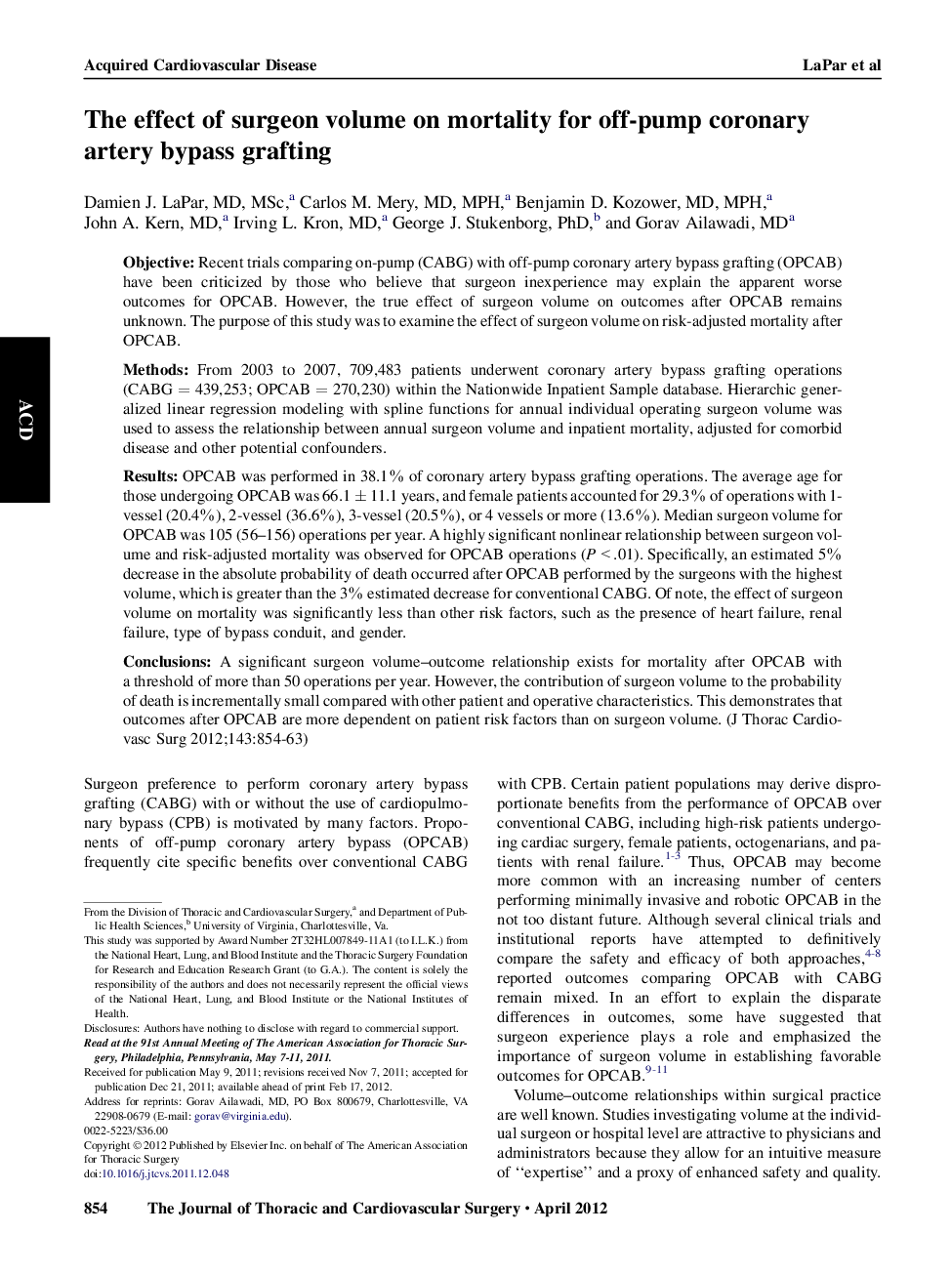| Article ID | Journal | Published Year | Pages | File Type |
|---|---|---|---|---|
| 5990430 | The Journal of Thoracic and Cardiovascular Surgery | 2012 | 10 Pages |
ObjectiveRecent trials comparing on-pump (CABG) with off-pump coronary artery bypass grafting (OPCAB) have been criticized by those who believe that surgeon inexperience may explain the apparent worse outcomes for OPCAB. However, the true effect of surgeon volume on outcomes after OPCAB remains unknown. The purpose of this study was to examine the effect of surgeon volume on risk-adjusted mortality after OPCAB.MethodsFrom 2003 to 2007, 709,483 patients underwent coronary artery bypass grafting operations (CABG = 439,253; OPCAB = 270,230) within the Nationwide Inpatient Sample database. Hierarchic generalized linear regression modeling with spline functions for annual individual operating surgeon volume was used to assess the relationship between annual surgeon volume and inpatient mortality, adjusted for comorbid disease and other potential confounders.ResultsOPCAB was performed in 38.1% of coronary artery bypass grafting operations. The average age for those undergoing OPCAB was 66.1 ± 11.1 years, and female patients accounted for 29.3% of operations with 1-vessel (20.4%), 2-vessel (36.6%), 3-vessel (20.5%), or 4 vessels or more (13.6%). Median surgeon volume for OPCAB was 105 (56-156) operations per year. A highly significant nonlinear relationship between surgeon volume and risk-adjusted mortality was observed for OPCAB operations (P < .01). Specifically, an estimated 5% decrease in the absolute probability of death occurred after OPCAB performed by the surgeons with the highest volume, which is greater than the 3% estimated decrease for conventional CABG. Of note, the effect of surgeon volume on mortality was significantly less than other risk factors, such as the presence of heart failure, renal failure, type of bypass conduit, and gender.ConclusionsA significant surgeon volume-outcome relationship exists for mortality after OPCAB with a threshold of more than 50 operations per year. However, the contribution of surgeon volume to the probability of death is incrementally small compared with other patient and operative characteristics. This demonstrates that outcomes after OPCAB are more dependent on patient risk factors than on surgeon volume.
